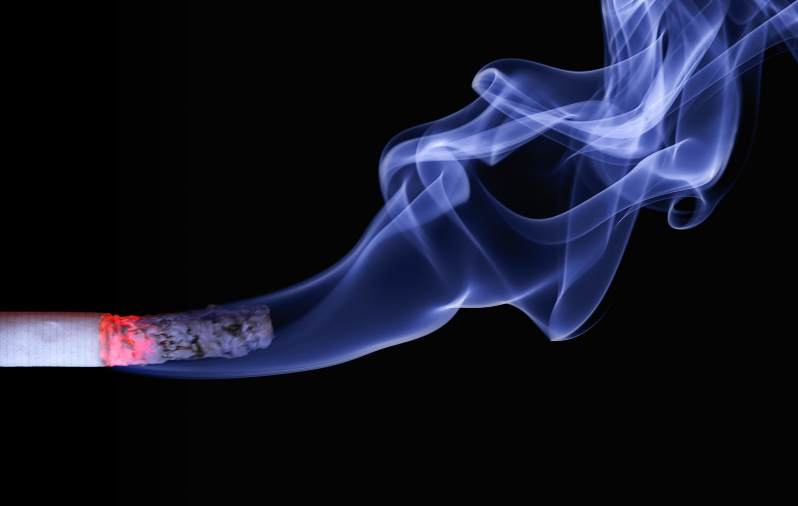
Do you ever go into a home where smokers live and it smells of smoke despite no one actively smoking at the time? That’s because smoke does not just go away. Walls, carpets, furniture, and even clothing will absorb the smoke and then gradually release it back into the environment. The chemicals from the smoke you are exposed to after the cigarette goes out are called “thirdhand” smoke. This thirdhand smoke includes nicotine, tobacco-specific carcinogens and other toxicants. Levels of thirdhand smoke in the house dust of non-smokers can be enough to, by itself, increase the cancer risk of a non-smoker living there. Thirdhand smoke can be breathed in when it is off-gassed from the walls, carpets and furniture. It is directly absorbed through the skin when a contaminated surface is touched. It can also be ingested when a contaminated object is placed in the mouth.
Because of this, very young children are most at risk from thirdhand smoke exposure. They spend much of their time close to the floor or on the carpet, and they are always putting things in their mouths.
So what can you do to protect yourself and your child from thirdhand smoke?
Probably the most important thing you can do is to be sure that no one who lives in your home, or whose home your child spends time in, are smokers. If you or someone you care about is a smoker, effective treatment is available.
There are medications a doctor can prescribe that can make it a lot easier to stop smoking. Nicotine addiction can be a very severe addiction – worse than heroin sometimes. Nicotine changes how the brain is wired, so when you are addicted the brain will not work normally without nicotine on board. Although some people can stop smoking without medications, it is not surprising that most people need help to be able to stop smoking comfortably.
Remember, though, that a child is worth the effort. The best protection for your child is when no one whom they are close to are smokers. If the people you are close to are not yet ready to stop smoking, you can protect your child by keeping the home and car strictly smoke free. Any smoking should be at least 20 or more feet from a door or window. That means no smoking inside the home ever. Not in the bathroom, not in the bedroom, not anywhere. If it is too hot, too cold or severe weather, there should still be no smoking in the home at all. Smokers should change clothes after they come inside.
Free help in stopping smoking is available over the phone at 1-800-QUIT-NOW. And if you’ve noticed any health concerns with your child — especially if they live in a house with a smoker — such as a chronic cough or congestion, please don’t hesitate to give MacKoul Pediatrics a call at (239) 573-2001.
 Do you ever go into a home where smokers live and it smells of smoke despite no one actively smoking at the time? That’s because smoke does not just go away. Walls, carpets, furniture, and even clothing will absorb the smoke and then gradually release it back into the environment. The chemicals from the smoke you are exposed to after the cigarette goes out are called “thirdhand” smoke. This thirdhand smoke includes nicotine, tobacco-specific carcinogens and other toxicants. Levels of thirdhand smoke in the house dust of non-smokers can be enough to, by itself, increase the cancer risk of a non-smoker living there. Thirdhand smoke can be breathed in when it is off-gassed from the walls, carpets and furniture. It is directly absorbed through the skin when a contaminated surface is touched. It can also be ingested when a contaminated object is placed in the mouth.
Do you ever go into a home where smokers live and it smells of smoke despite no one actively smoking at the time? That’s because smoke does not just go away. Walls, carpets, furniture, and even clothing will absorb the smoke and then gradually release it back into the environment. The chemicals from the smoke you are exposed to after the cigarette goes out are called “thirdhand” smoke. This thirdhand smoke includes nicotine, tobacco-specific carcinogens and other toxicants. Levels of thirdhand smoke in the house dust of non-smokers can be enough to, by itself, increase the cancer risk of a non-smoker living there. Thirdhand smoke can be breathed in when it is off-gassed from the walls, carpets and furniture. It is directly absorbed through the skin when a contaminated surface is touched. It can also be ingested when a contaminated object is placed in the mouth.